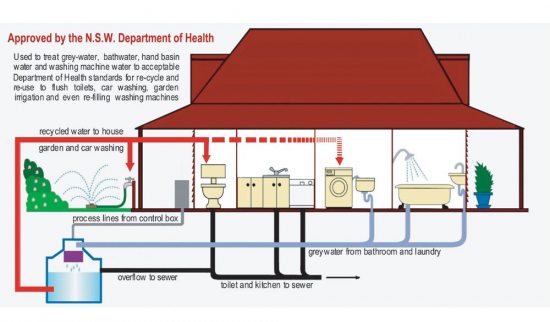Although 71% of the earth is covered in water, less than 1% is available for human use. While population and demand on freshwater resources are increasing, supply will always remain constant. The average American family uses more than 300 gallons of water per day at home. 40 gallons per person daily are just used to flush down the toilet. Roughly 70 percent of this use occurs indoors 1. As of 2019, an average U.S. family of four pays about $72.93 for water every month 2.

Our buildings are equipped with greywater system and catchwater system to lower the water bills and become self sufficient.
Greywater System
Greywater is all the wastewater generated in households from various streams such as washing machines, bathrooms sinks, and showers. A greywater system is used to collect the water from these sources and divert it to use in another purpose like toilet flushing, watering gardens or landscaping.

Advantages of greywater system usage are:
- Potable water conservation
- Lower water bills
- Decreased load on local sewers
- Potential initiatives to meet LEED or Living Building Challenge criteria
- Reduced energy use and greenhouse gas production from water treatment plants
- Enhanced drought resistance
Catchwater
Catch water, also known as rainwater harvesting, is a system to collect the run-off from a building or roof in order to store it for later use. Catchwater is a sustainable mechanism to increase freshwater for use. Rainwater can essentially be used anywhere we use tap water.
Benefits of catchwater
- Clean and free source of water
- Conserve water and reduces water bills
- Great for landscape plants and gardens because it is not chlorinated
- Inexpensive and easy to maintain
- Reduces stormwater runoff from homes and can solve the drainage problems on the property